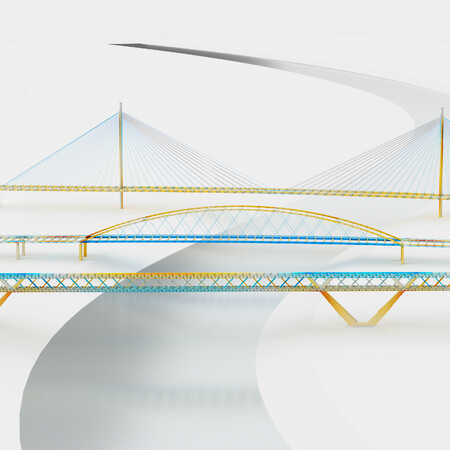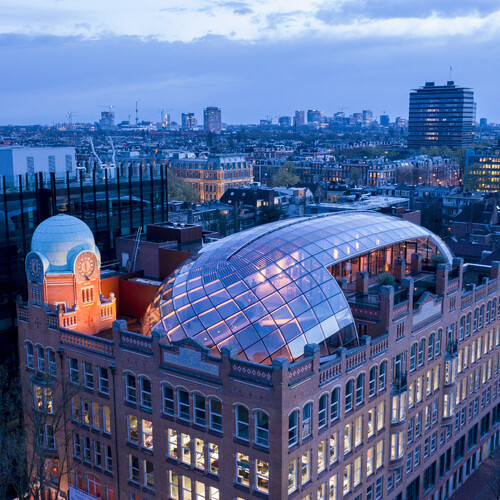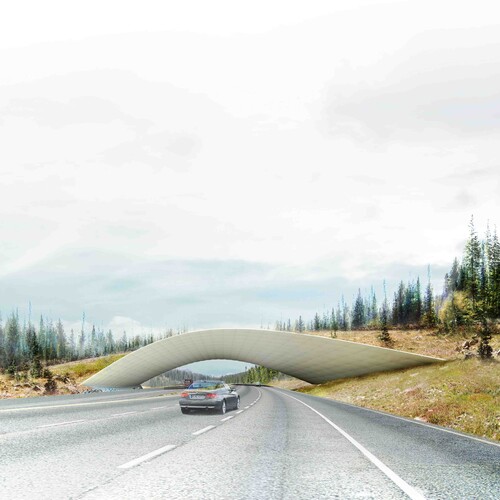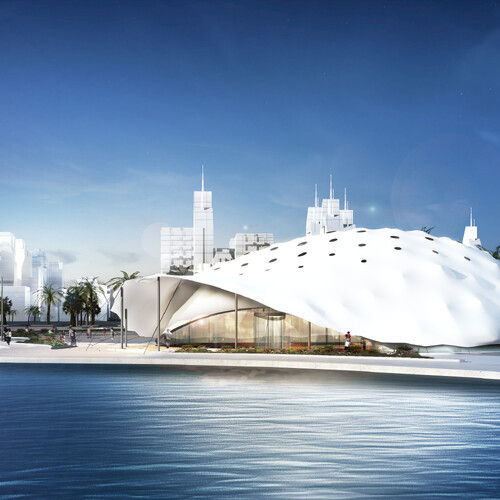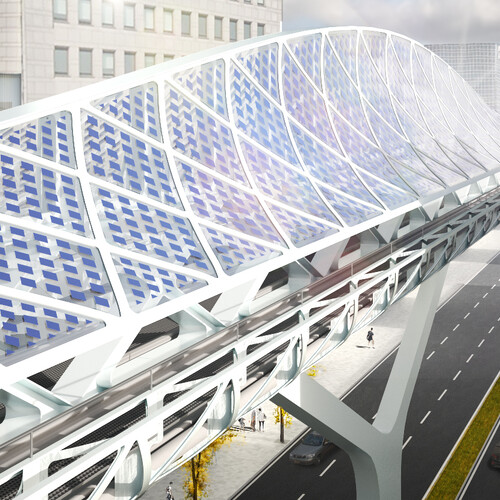An old dream
In the design philosophy of ZJA an architectural plan emerges out of a creative interplay between the needs of people and their environment and the existing technical and structural possibilities. These come to light when a commission is studied. The most timelessly attractive and economically functional design is discovered when understanding of the structural dimension and the materials are as closely bound together as possible with the urban and ecological context. Then a beauty can arise that is not purely illustrative or decorative but that rests on an integral understanding of the situation, the function, the structural possibilities and the material.
For ZJA, therefore, collaboration with structural designers is not just a natural consequence of its own design process but something that takes place during the initial research phase and is seen in the very earliest sketches. That organic relationship between the two aspects also contributes to the pursuit of circularity and of innovative and climate-conscious designs. It is an old dream at ZJA to be able to develop, when working on a new bridge, for example, its own structural design as well as an architectural design.
With the setting up of ZJA-Structural, a start has been made on integrating, step by step, the research already done with that in mind into daily design practice for all the projects in which ZJA becomes involved.
Digital modelling
ZJA has developed digital models for countless studies and special projects over the past few years. These enable the designers to test out their questions and intuitions. How do various geometric forms behave in a structural sense? Where are the limiting values and balances of forces? What do the different materials involved do? Examples include the development of The Shaded Dome, the design for the Wildlife Crossings in the West Vail Pass (USA), which is sunk into the landscape, and the project Capital C Amsterdam, with its dome (High Light) in steel and glass, in the old Diamond Exchange in Amsterdam.
In recent years, by attracting more designers with a double Master’s (architecture and structural design), it has been possible to connect organically many insights concerning the structural dimension of the design with the architectural task at hand. Rapid developments in digital technology are making this integrated way of working simpler and more effective.
Now the time has come to deploy the potential of this quick, organic workflow between the different aspects of the design process in all the commissions for which it is suitable. First to lend themselves to this approach are the designs of bridges. Digital modelling and the organic laboratory approach help in exploring the questions and problems that arise when the geometric version of a bridge is translated into the physical characteristics of actual materials and their mutual relationships. But it is at least as important that this interrogative and exploratory approach invites thinking that goes off the beaten track and pursues new typologies. The greatest advantage of all is that those intuitions need not remain pencil sketches but can immediately be tested in quantified, structural terms. That stimulates an inquisitive and inventive design process.
The future
ZJA regards it as the central task of the architect to create as realistic as possible a synthesis between technical demands and possibilities and the functional, human and ecological aims contained in an assignment. Furthermore, working in multidisciplinary teams during design and construction is vital. In this respect, the setting up of ZJA-Structural will change nothing.
The intention of ZJA-Structural is not to replace our intensive collaboration with the engineers attached to partners who create structural designs. It is precisely to make that collaboration more efficient, substantial and organic. If for the design of a bridge there exists not just a draft architectural design but a draft structural design too, then the architects and the engineers will be more able to speak the same language about the project at hand, right from the start.
The aim is to achieve a greater refinement of the design much more easily and quickly. This is not simply a matter of efficiency and job satisfaction, it is also stimulating and helpful to the task presented by the future of architecture: the finding of a new symbolic language, a new architectural idiom, suitable for a world that is determinedly moving towards the energy transition and seeking new ways of designing and building that are circular and climate conscious.
